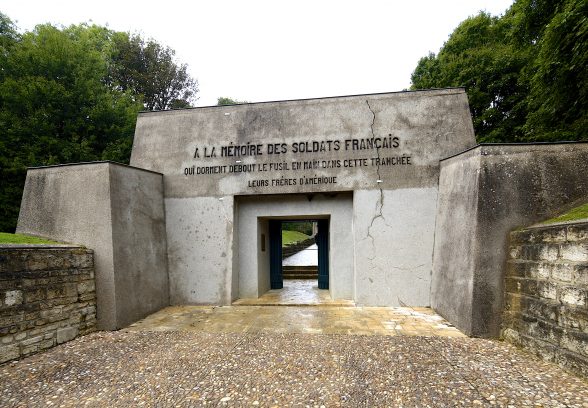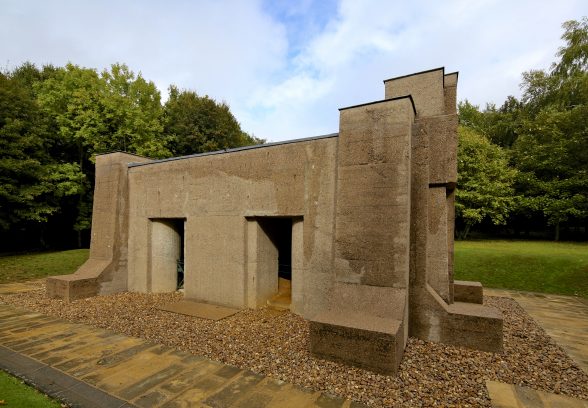This website uses cookies
This website uses cookies to enable it to function properly and to analyse how the website is used. Please click 'Close' to accept and continue using the website.





France: Tranchée des Baïonnettes, Douaumont
Architect: André Ventre
Location: Douaumont, France
The Tranchée des Baïonnettes is an extraordinary site. On 10th June 1916 two companies of the 137th Régiment de ‘l’Infanterie were buried alive in their front-line trench by shelling; according to legend only the tops of their rifles protruded above the ground and, after research, the site was discovered in 1919. It was decided that this poignant tomb must be preserved as a memorial and as a symbol of the unbreakable spirit of the defending French army. An American banker, George F. Rand (who was killed in an air crash shortly afterwards), donated the funds required to protect the site. A massive, rugged, almost Cubist structure of reinforced concrete, with echoes of Frank Lloyd Wright, was placed above it, which was inaugurated in the presence of a host of dignitaries in 1920. The architect, André Ventre, wrote that “It is evident that nothing could typify the tragedy and heroism of the bayonet trench better than the trench itself… My design comprises a steel and concrete covering over the position, protecting the protruding rifle barrels and bayonets from the rain and snow and providing also a suitable tomb for the dead soldiers who, of course, remain in the trench. The structure will be heavily reinforced with steel and everything possible to ensure durability will be done. I guarantee the monument to last for at least 500 years”.
However, common sense suggests that the ground and artefacts now protected cannot possibly be the original collapsed trench with its victims. As Jay Winter has written, “The Trench of the Bayonettes is a war memorial of a special kind: a tomb frozen in time and preserved not by, but from art… But there is one irony which must be recognised. The location chosen for commemoration was flat; the place where the bayonets were found was a series of shell craters some 30 metres away. The memorial is, therefore, on an imaginary site of heroism. It is at best adjacent to the place where the men of the 137th regiment died. Thus from the very outset the attempt to preserve the site of memory ‘as it really was’ entailed the creation of myth.” And Rose Coombs noted in 1986 that “Today there are few bayonettes or rifles visible: in fact every time I visit the monument I see a difference. Only 17 unknown soldiers remain buried here, marked by the wooden crosses, the other 40 who were identified were reburied in Fleury Cemetery.”
Gavin Stamp
Either enter the name of a place or memorial or choose from the drop down list. The list groups memorials in London and then by country

Become a C20 member today and help save our modern design heritage.